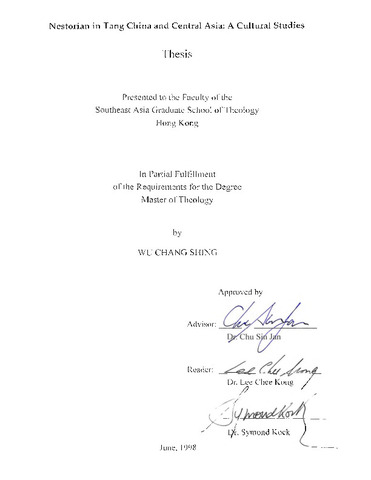Nestorian in Tang China and Central Asia: A cultural studies

Page views
190Petsa
1998-06May-akda
Tagapayo ng Tesis
Magbahagi
Metadata
Ipakita ang buong tala ng item
Abstract
This thesis is a study of Nestorianism in Tang China. It is developed on the solid basis of the research of the past scholars. In the course of writing the thesis, the intercultural viewpoint has been adopted, such that the interactions between the culture, thoughts and indigenous religions of China and those came from Central Asia. Unlike the past works, which were concerned with the relations between Nestorianism and the politics of Tang dynasty, or with the result of the mission of the religion, I consider the discourse of Chinese-Barbarian" as the best concept for understanding how the Nestorians acquired their identity in China. This perspective is helpful in our analysis of the accommodation of Nestorianism in Chinese culture, on the one hand, and of the way Chinese culture faced this foreign religion.
I do not think the decline of Nestorianism could be attributed to Huichang suppression of Buddhism (會昌毀佛) or the rebellion of Huangchao(黃巢之亂) in the late Tang dynasty, as have been done by some scholars. Rather, the beginning of the decline should be located earlier to the Revival of Tang dynasty, around 785-820. In this period, die society experienced a great change, but the religion was unable to satisfy the needs of common people. Had it not been the case, it would have secured enough support from the masses, and would have been able to stand the political oppression and survive.
Paglalarawan
Abstract only
Mungkahing Sipi
Wu, C. (1998). Nestorian in Tang China and Central Asia: A cultural studies [Unpublished master's thesis]. South East Asia Graduate School of Theology.
Uri
ThesisMga Paksa
Mga keyword
Kagawaran
Faculty of South East Asia Graduate School of TheologyDegree
Master of TheologyLokasyon ng Istante
BT 212 .W8 1998
Pisikal na paglalarawan
103 leaves
Collections
- Master of Theology [51]

